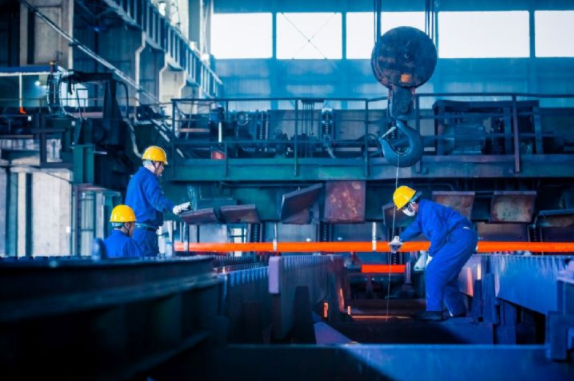Industry 4.0 is a sequential evolution process rather than a overnight revolution
The Industrial Internet of Things (IIoT) is often described as a new technology that replaces traditional technology, but its real potential is not a violent overturning strategy, but a gradual upgrade and improvement. The commercial refrigeration industry is a market with an annual output value of US$9.4 billion in the United States. It is one of the best demonstration cases of IIoT.
Networking technology has begun to appear in automatic monitoring and freezing systems that can make critical adjustments in real time based on specific items that need to be frozen, thereby reducing energy consumption and costs while preserving the freshness of the items; in addition, these intelligent systems can predict possible At the timing of the failure, the maintenance schedule is scheduled in advance to ensure the continuous operation of the system.
In order to achieve such an evolution, the freezing company can hardly completely eliminate the old system and replace it with a new one, because replacing hundreds or thousands of industrial refrigerators, freezer or frozen freight carriers will lead to high difficulty. Cost and threaten service coherence.
Conversely, frozen companies are more likely to integrate new interconnect technologies with existing systems, as if they were wearing a digital cloak in the physical world to better capture and analyze critical data already in existing systems. And refine new insights or values ​​to achieve new breakthroughs in business possibilities.

IIoT is gradually becoming more prevalent in the global industry. Since the value of IIoT can truly understand the global economy, companies will need to plan and follow smart plans to achieve a systematic evolution, rather than a sudden revolution, ready to prepare for existing processes. For companies that digitize and develop new processes, IIoT can respond quickly and dynamically to transient customer and market needs, control costs, and stand out in the marketplace.
Smart devices with sensors form the network, collect data, and then translate and analyze (through edge computing or cloud computing), automatically taking action based on the company's intelligent automation guidelines, including predictive analytics, such as detecting an industrial frozen environment The problem, or the discovery of potential stoppages in the plant, or even increase the plant capacity to increase production capacity and revenue.
Accenture predicts that by 2025, in addition to a market worth nearly a few billion dollars, the impact of IIoT technology could bring up to $14.2 trillion in revenue for the global economy over the next decade. But Accenture's survey of more than 1.400 corporate executives showed that 84% of respondents believe their organization has the ability to create new sources of service revenue from IIoT; 73% said they have yet to make concrete progress; surprising The only 7% of companies have developed a comprehensive strategy for project investment.
Understandably, companies tend to be conservative in the layout of new technologies, especially when new technologies may change the old systems that inherently require professional skills to operate. IIoT sounds like a technology that brings many challenges and risks. Interconnected technology to optimize existing capital is a powerful way for companies to build IIoT drivers.
Companies should remember three basic guiding principles when building IIoT:First, establish a suitable team
One of IIoT's main technical challenges is to select, customize and integrate the right digital engine. Therefore, companies need to understand how to implement the key components of IIoT in an industrial environment. These experts understand the collection and analysis of very large, high-speed transmission. Data flow software and how to configure performance and reliability, flexibility and security through proper layout of edge and cloud computing configurations.
Second, pre-layout test
Unsuccessful IIoT layout can lead to severe production downtime, loss of support, and other harmful effects on the business. This does not meet the IIoT's mission. Therefore, it is necessary to use different test methods in the pre-layout test according to the experimental facilities and pilot routes. The approach is to make the best use of the simulation infrastructure and applications to minimize the scope of field testing prior to production layout.
Third, develop the company's IIoT road map
The move to IIoT is a long-term strategic commitment and journey, not a single project. Enterprises and their technology partners should develop a roadmap that specifies the various implementation steps and establish milestones and timelines. This roadmap should be implemented and adopted in phases, with priority given to the implementation of various use cases, and The existing process is transformed into a process supported by IIoT.
Key metrics can be identified at each stage and eagerly greet with staged success. It is important that the early goals set must be achievable and the changes and evolutions must be obvious. This ensures ongoing funding and resource allocation for the IIoT roadmap.
By following these guidelines, companies can move toward an IIoT ecosystem that balances innovation, cost effectiveness, layout flexibility, scalability, and technology longevity. Ultimately, if executed properly, the derived business value will far exceed the evolving investment.
Liquid Crystal Display For Instrument
Liquid Crystal Display For Instrument,Large Industrial Precision Lcd Display,Small Industrial Body Thin Lcd Display,Precise Liquid Crystal Display
Dongguan Yijia Optoelectronics Co., Ltd. , https://www.everbestlcdlcms.com
